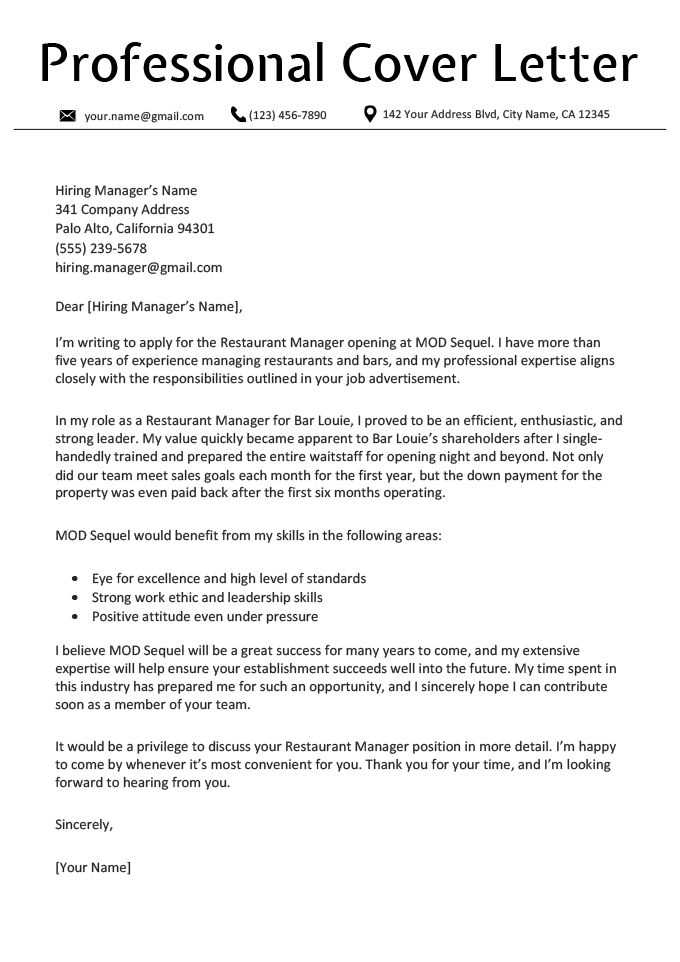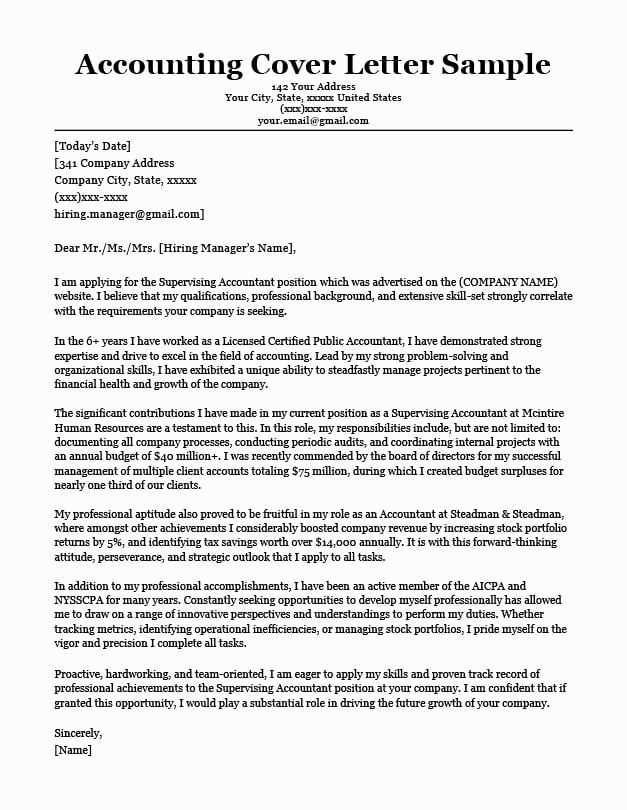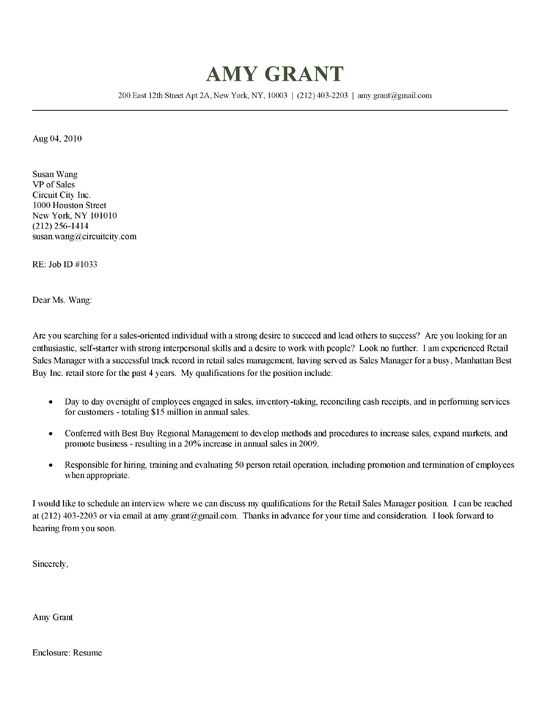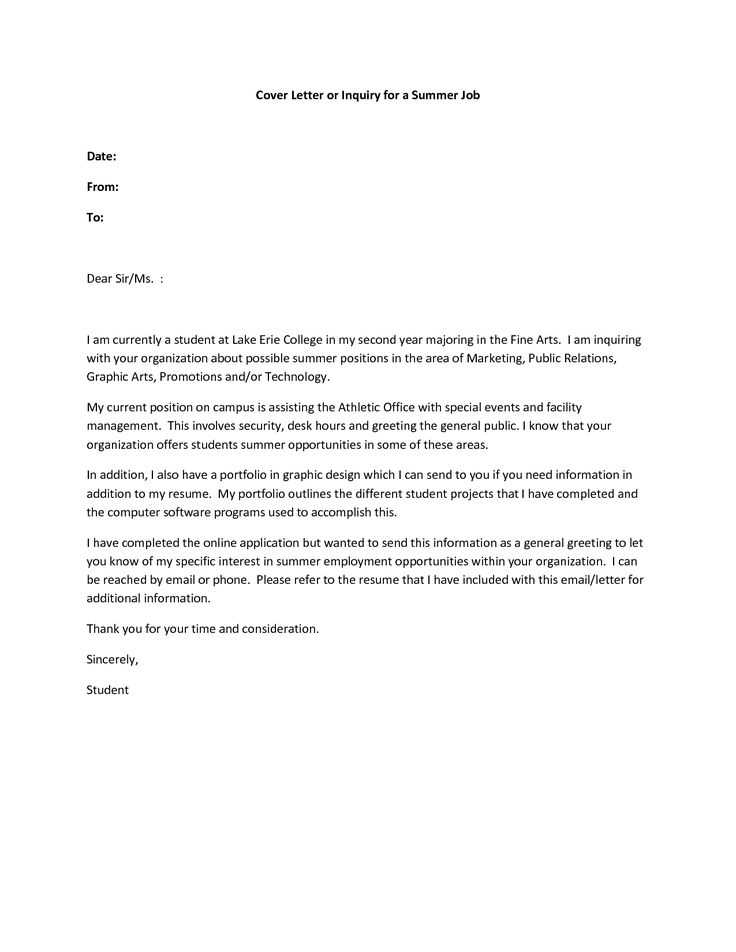Job seeker cover letter template

Focus on the specific role you’re applying for right from the start. Clearly state your interest in the position and why it excites you. Avoid vague expressions and get straight to the point. Show your enthusiasm for what the company does, and briefly explain how your experience aligns with the job requirements.
Highlight your key qualifications without repeating what’s on your resume. Choose the most relevant skills and experiences that make you a strong candidate. Be specific about how you’ve applied these skills in past roles, and how they can benefit the company you’re applying to.
Keep it concise. A cover letter should be brief but informative. Don’t overwhelm the reader with unnecessary details. Instead, focus on making an impact with your words, showing how your background makes you a great fit for the role.
End with a confident statement, expressing your eagerness to discuss your qualifications further. Make it clear that you’re looking forward to the opportunity to meet and talk about how you can contribute to the company’s success. Sign off with a professional yet approachable tone.
Job Seeker Cover Letter Template
Begin by addressing the hiring manager by name if possible. If not, use a general greeting such as “Dear Hiring Manager.” Always personalize your cover letter to show you’ve researched the company and the role. This helps you stand out from generic applications.
Introduction
State the position you are applying for and briefly mention where you found the job listing. Include a sentence on why you are interested in the role or how your experience aligns with the job requirements.
Experience and Skills
Focus on a couple of key achievements or skills that directly relate to the job. Highlight how your background matches the specific needs of the company, using quantifiable results when possible to demonstrate success. Be concise, but show your value.
Conclude with a call to action, such as expressing your interest in discussing how you can contribute to the team. Close with a thank you and mention that you look forward to the opportunity to speak further.
How to Address the Hiring Manager in Your Cover Letter
Always address the hiring manager by name when possible. It shows you’ve done your research and adds a personal touch. If you can’t find a name, use a general but professional greeting like “Dear Hiring Manager.” Avoid outdated or overly formal phrases like “To Whom It May Concern.”
- Find the Hiring Manager’s Name: Check the job listing, company website, or LinkedIn. If the name isn’t listed, call the company and ask directly.
- Use the Correct Title: Make sure you address them using the correct title–Mr., Ms., or Dr.–based on what you find. If unsure, “Dear [First Name] [Last Name]” is a safe option.
- Be Specific and Direct: Using a name makes your cover letter stand out. “Dear [Full Name]” is much better than “Dear Hiring Manager.”
- Use Gender-Neutral Alternatives if Necessary: If you’re uncertain about gender, simply use their full name or “Dear Hiring Manager” to avoid assumptions.
Personalizing your greeting helps build rapport and sets the right tone for the rest of your cover letter.
Creating a Strong Opening Sentence That Stands Out

Begin with a sentence that immediately connects your skills and experience to the job. Avoid generic phrases; instead, highlight your most relevant achievement or trait. For example, instead of saying “I am applying for this position,” say “With five years of experience managing high-impact marketing campaigns, I am excited to contribute to your team.” This approach grabs attention and shows you understand the role’s demands.
Tailor your opening to reflect the specific company and position. Mention a recent project or success from the company that excites you, showing that you’ve done your homework. It not only makes your introduction relevant but also demonstrates genuine interest.
Avoid clichés like “I’m a hard worker” or “I’m passionate about my work.” Instead, present concrete examples that convey your capabilities and how they align with the company’s needs. The goal is to create a sense of immediacy and value in your first sentence.
Linking Your Skills to the Job Requirements Directly
Focus on aligning your skills with the specific requirements listed in the job description. Highlight the most relevant abilities and match them to the job’s key demands. Use concrete examples to demonstrate how your experience directly supports these needs.
If the job emphasizes teamwork, mention specific projects where you collaborated effectively. For instance, if the position asks for strong communication skills, describe situations where your communication led to positive results–whether in team meetings or client interactions.
For technical roles, directly reference the tools and software the company uses. If you have hands-on experience with these, explain how you’ve applied them in past positions, solving problems or improving efficiency.
Don’t just list your skills; make it clear how they apply to the job at hand. This shows the employer you not only have the necessary abilities, but you understand their specific needs and how you can address them right away.
End with a strong statement about how your qualifications make you an ideal fit for the role, reinforcing your capability to meet their expectations without overstating it.
Demonstrating Your Knowledge of the Company and Its Values
Show how your values align with the company’s culture. Research the company’s mission, recent achievements, and social impact. Mention specifics that show you’ve done your homework. Refer to projects, partnerships, or awards the company is proud of. This not only shows your interest but also that you understand what drives them.
- Refer to the company’s mission statement or core values that resonate with you. Show how these align with your own professional principles.
- Highlight how your skills can contribute to the company’s ongoing goals. For example, if the company values innovation, discuss how you’ve led projects that involved creative problem-solving.
- If applicable, mention a recent initiative or product the company launched and explain how it excites you or fits your skillset.
Personalize your approach. If the company is known for its community work, share how you’ve participated in similar initiatives. This demonstrates a genuine interest in contributing to the company’s broader mission.
- If sustainability is a key focus, mention how your previous work aligns with eco-friendly practices.
- If the company emphasizes diversity and inclusion, talk about experiences that highlight your commitment to creating inclusive environments.
End by connecting your knowledge of the company with your career aspirations. Show that you’re not just looking for any job, but specifically want to be part of their team because you understand and appreciate what they stand for.
Showing Enthusiasm for the Role Without Overdoing It

Express your interest in the role with genuine excitement, but keep it grounded. Acknowledge the company’s values or mission, and relate them to your skills or experience. This helps show that you’re invested without sounding excessive.
Balance Enthusiasm with Professionalism

Enthusiasm should reflect your passion for the job, not desperation. Avoid overused phrases like “I’m super excited!” Instead, articulate specific reasons why the role appeals to you. Focus on the responsibilities you’re most eager to take on and how they align with your goals.
Keep Your Tone Confident, Not Overbearing
Confidence demonstrates your commitment, but overconfidence can feel like pressure. Use positive language to show that you’re ready to contribute. Instead of saying “I’m the perfect fit for this job,” try “I’m confident I can contribute value with my experience in…”. This shows belief in your abilities without overstating them.
| Overdone Enthusiasm | Balanced Enthusiasm |
|---|---|
| “I’ve been waiting for this opportunity my whole life!” | “This role aligns well with my career goals and skill set.” |
| “I would absolutely love to work for you, no matter the position!” | “I’m excited about contributing to your team, particularly in [specific area].” |
| “This job is exactly what I was born to do!” | “I believe my experience in [specific skill] would be a great asset to your company.” |
By being specific and confident, you demonstrate interest in the role while maintaining professionalism. Avoid exaggerations that could distract from your actual qualifications.
Finishing Your Cover Letter with a Clear Call to Action
End your cover letter by prompting the hiring manager to take the next step. State directly how you’d like to move forward, such as scheduling an interview or discussing your application further. Make it easy for them to take action by suggesting a clear timeframe. For example, “I look forward to discussing my qualifications with you in more detail next week.”
Don’t leave any ambiguity. Instead of simply saying you’re “available for an interview,” express your eagerness and commitment. Mention a specific time frame, such as “I will be available for a call this Thursday afternoon or any time next week.” This shows your initiative and willingness to engage promptly.
Also, thank the reader for their time and consideration. A polite conclusion like “Thank you for considering my application, and I hope to speak with you soon” reinforces professionalism while leaving a positive impression.
Finally, make sure your contact information is easily accessible, either in your signature or the closing paragraph. A simple, “You can reach me by phone or email,” provides the reader with quick access to connect with you.